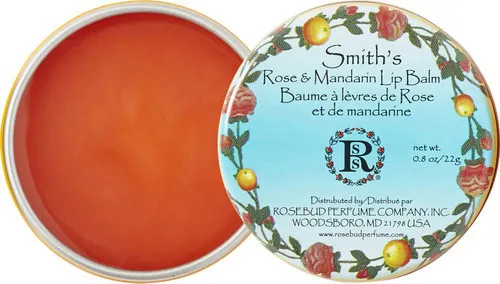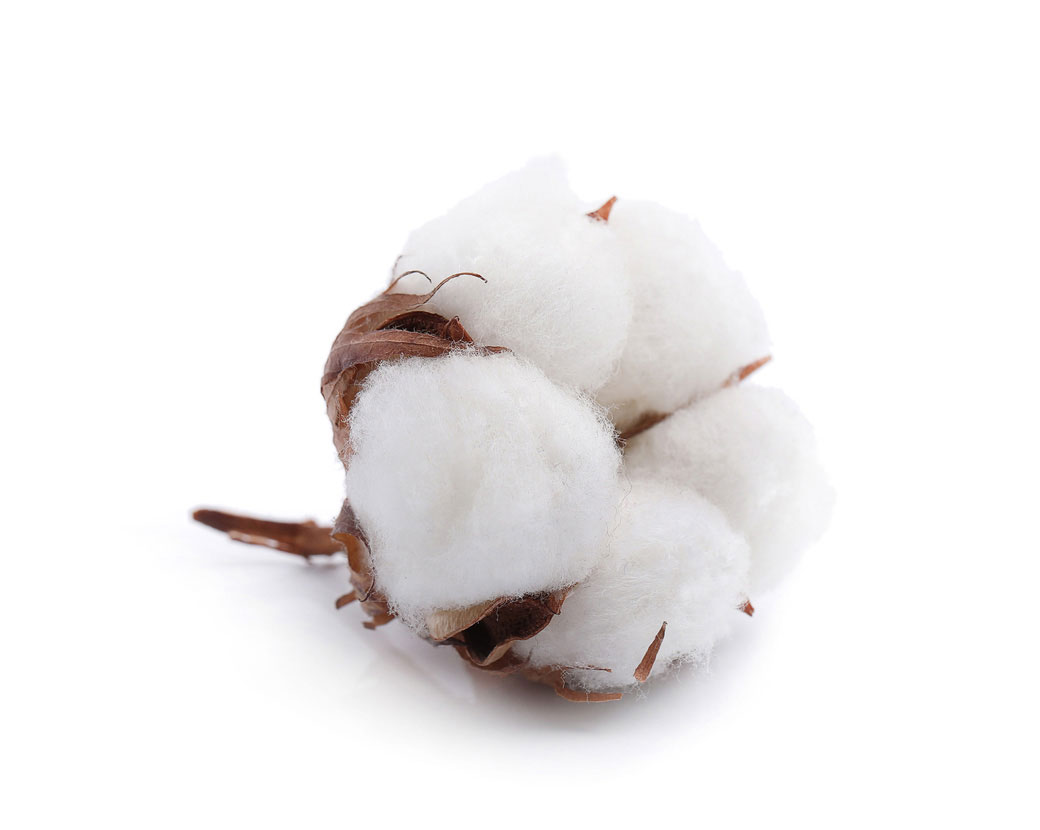Products Scan Our science '%20fill='black'/%3e%3c/svg%3e)
Skincare 
Bath & Body 
Make up 
Trending 
Skincare
Moisturizers
Treatments
Cleansers
Eye Care
Bath & Body
Make up

Hover to see details. On mobile? Tap for ingredient stories!
Full Ingredient List (INCI):






According to CreamScan analysis, Rosebud Perfume Co. Rose & Mandarin Lip Tin is quite moisturizing, with a moisturizing rating of 5.0 out of 10.
Is it more humectant or occlusive? It is purely occlusive. It has zero Humectancy (we didn't find any humectant ingredients on the ingredient list) and a maximum Occlusivity of 10 out of 10, due to the high content of Petrolatum (est. ≈64.0%) and Gossypium Herbaceum (Cotton) Seed Oil (est. ≈35.0%).
This type of product, when used as a standalone moisturizer, can deliver an exceptional level of occlusive hydration that is adequate for dry to very skin. The occlusive profile of Rosebud Perfume Co. Rose & Mandarin Lip Tin suggests a rich, thick texture, making it perfectly suited for dry skin.
Please refer to the Ratings section below for details of the moisturizing rating calculation.
📌 Please note that this is not a complete list of benefits. We are in the process of enhancing our model to incorporate anti-pigmentation, exfoliation and anti-acne ratings.
With exceptional occlusivity, this product is optimal for moisturizing dry and very dry skin but may be too thick for other skin types, including normal, and especially combination and oily skin.
If you have oily, combination, or normal skin and are considering purchasing this product for the first time, it might be a good idea to try a sample before buying.
An ideal moisturizer for any skin type should balance the right level of occlusivity (depending on skin type) with a significant amount of humectants, while Rosebud Perfume Co. Rose & Mandarin Lip Tin contains no humectants at all.
People with dry skin would definitely benefit from adding water-binding humectants to their moisturizing routine for effective dual-action moisturizing. If this is your only moisturizer, it may be worth including a humectant-rich product, such as a serum, in your skincare routine.
|
Est. %
The Estimated % is our algorithm-based assumption about an ingredient's concentration in a formula. Learn more The Estimated % is our algorithm-based assumption about an ingredient's concentration in a formula. Learn more | Ingredient | Origin | Functions | |
|---|---|---|---|---|
| 64 | Petrolatum  Also known as Vaseline, this is the most powerful occlusive moisturizer and at least twice as effective as other occlusives. This is why we multiply the petrolatum score by 2 when calculating the Occlusivity of the product. Petrolatum is not comedogenic. Petrolatum  Also known as Vaseline, this is the most powerful occlusive moisturizer and at least twice as effective as other occlusives. This is why we multiply the petrolatum score by 2 when calculating the Occlusivity of the product. Petrolatum is not comedogenic. | Petroleum Ingredients derived from petroleum, also called crude oil. Crude oil deposits were obtained from the remains of ancient organisms, such as plants, algae, and bacteria. Petroleum Ingredients derived from petroleum, also called crude oil. Crude oil deposits were obtained from the remains of ancient organisms, such as plants, algae, and bacteria. | Moisturizing (Occlusive) Occlusives are moisturizing ingredients that seal moisture into the skin, forming a water-resistant barrier. Moisturizing (Occlusive) Occlusives are moisturizing ingredients that seal moisture into the skin, forming a water-resistant barrier. Emollient Emollients fill the micro-cracks in the skin and leave it feeling soft and pleasant to the touch. Emollients are often mistakenly perceived as moisturizing ingredients. Emollient Emollients fill the micro-cracks in the skin and leave it feeling soft and pleasant to the touch. Emollients are often mistakenly perceived as moisturizing ingredients. Formula helper
Formula helper
| |
| 35 | Gossypium Herbaceum (Cotton) Seed Oil  Derived from the seeds of the cotton plant, this emollient and occlusive fatty oil is mainly comprised of linoleic and palmitic acids. It also contains large amounts of phospholipids - key components of all cell membranes. Gossypium Herbaceum (Cotton) Seed Oil  Derived from the seeds of the cotton plant, this emollient and occlusive fatty oil is mainly comprised of linoleic and palmitic acids. It also contains large amounts of phospholipids - key components of all cell membranes. | Botanical Ingredients derived from plants, mosses, and lichens: extracts, oils, powders, juices and other types of processed plant materials. Botanical Ingredients derived from plants, mosses, and lichens: extracts, oils, powders, juices and other types of processed plant materials. | Moisturizing (Occlusive) Occlusives are moisturizing ingredients that seal moisture into the skin, forming a water-resistant barrier. Moisturizing (Occlusive) Occlusives are moisturizing ingredients that seal moisture into the skin, forming a water-resistant barrier. Emollient Emollients fill the micro-cracks in the skin and leave it feeling soft and pleasant to the touch. Emollients are often mistakenly perceived as moisturizing ingredients. Emollient Emollients fill the micro-cracks in the skin and leave it feeling soft and pleasant to the touch. Emollients are often mistakenly perceived as moisturizing ingredients. | |
| 1 | Fragrance  Under trade secret law, manufacturers have the right not to disclose what exactly went into the fragrance and use the unspecific word Fragrance or Parfum instead. Many fragrances are highly allergenic. Fragrance  Under trade secret law, manufacturers have the right not to disclose what exactly went into the fragrance and use the unspecific word Fragrance or Parfum instead. Many fragrances are highly allergenic. | Botanical Ingredients derived from plants, mosses, and lichens: extracts, oils, powders, juices and other types of processed plant materials. Botanical Ingredients derived from plants, mosses, and lichens: extracts, oils, powders, juices and other types of processed plant materials. Synthetic All kinds of ingredients formulated or produced by a chemical process, or those that have a chemical modification in their structure. Synthetic All kinds of ingredients formulated or produced by a chemical process, or those that have a chemical modification in their structure. Animal Ingredients derived from animals (including birds, fish, crustaceans, mollusks, and insects) or produced by animals (e.g. dairy- and egg-derived ingredients, bee products, silk, pearls, etc.) Animal Ingredients derived from animals (including birds, fish, crustaceans, mollusks, and insects) or produced by animals (e.g. dairy- and egg-derived ingredients, bee products, silk, pearls, etc.) | Fragrance Fragrance ingredients add scent to a product or hide ('mask') the undesired aroma of other ingredients. Fragrance Fragrance ingredients add scent to a product or hide ('mask') the undesired aroma of other ingredients. | |
| 64  Petrolatum Function: Moisturizing (Occlusive), Moisturizing (Occlusive) Occlusives are moisturizing ingredients that seal moisture into the skin, forming a water-resistant barrier. Moisturizing (Occlusive), Moisturizing (Occlusive) Occlusives are moisturizing ingredients that seal moisture into the skin, forming a water-resistant barrier. Emollient, Emollient Emollients fill the micro-cracks in the skin and leave it feeling soft and pleasant to the touch. Emollients are often mistakenly perceived as moisturizing ingredients. Emollient, Emollient Emollients fill the micro-cracks in the skin and leave it feeling soft and pleasant to the touch. Emollients are often mistakenly perceived as moisturizing ingredients. Formula helper Formula helper
Formula helper Formula helper
Origin: Petroleum Petroleum Ingredients derived from petroleum, also called crude oil. Crude oil deposits were obtained from the remains of ancient organisms, such as plants, algae, and bacteria. Petroleum Petroleum Ingredients derived from petroleum, also called crude oil. Crude oil deposits were obtained from the remains of ancient organisms, such as plants, algae, and bacteria. |
| 35  Gossypium Herbaceum (Cotton) Seed Oil Function: Moisturizing (Occlusive), Moisturizing (Occlusive) Occlusives are moisturizing ingredients that seal moisture into the skin, forming a water-resistant barrier. Moisturizing (Occlusive), Moisturizing (Occlusive) Occlusives are moisturizing ingredients that seal moisture into the skin, forming a water-resistant barrier. Emollient Emollient Emollients fill the micro-cracks in the skin and leave it feeling soft and pleasant to the touch. Emollients are often mistakenly perceived as moisturizing ingredients. Emollient Emollient Emollients fill the micro-cracks in the skin and leave it feeling soft and pleasant to the touch. Emollients are often mistakenly perceived as moisturizing ingredients. Origin: Botanical Botanical Ingredients derived from plants, mosses, and lichens: extracts, oils, powders, juices and other types of processed plant materials. Botanical Botanical Ingredients derived from plants, mosses, and lichens: extracts, oils, powders, juices and other types of processed plant materials. |
| 1  Fragrance Function: Fragrance Fragrance Fragrance ingredients add scent to a product or hide ('mask') the undesired aroma of other ingredients. Fragrance Fragrance Fragrance ingredients add scent to a product or hide ('mask') the undesired aroma of other ingredients. Origin: Botanical, Botanical Ingredients derived from plants, mosses, and lichens: extracts, oils, powders, juices and other types of processed plant materials. Botanical, Botanical Ingredients derived from plants, mosses, and lichens: extracts, oils, powders, juices and other types of processed plant materials. Synthetic, Synthetic All kinds of ingredients formulated or produced by a chemical process, or those that have a chemical modification in their structure. Synthetic, Synthetic All kinds of ingredients formulated or produced by a chemical process, or those that have a chemical modification in their structure. Animal Animal Ingredients derived from animals (including birds, fish, crustaceans, mollusks, and insects) or produced by animals (e.g. dairy- and egg-derived ingredients, bee products, silk, pearls, etc.) Animal Animal Ingredients derived from animals (including birds, fish, crustaceans, mollusks, and insects) or produced by animals (e.g. dairy- and egg-derived ingredients, bee products, silk, pearls, etc.) |









